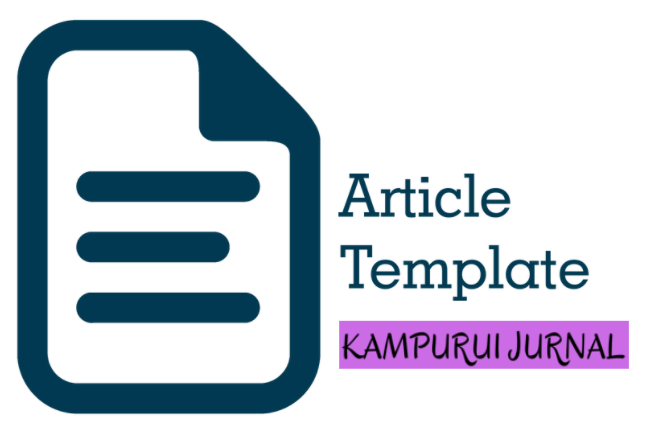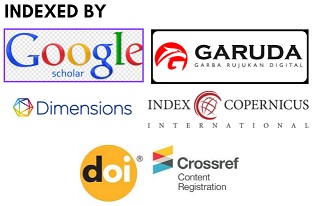CURAH HUJAN DAN SUHU UDARA TERHADAP KEJADIAN MALARIA DI KOTA BENGKULU
DOI:
https://doi.org/10.55340/kjkm.v4i2.646Keywords:
Rainfall, Malaria, TemperatureAbstract
High and low incidence of malaria can be controlled by physical environmental conditions of the breeding of Anopheles mosquitoes. Data malaria cases in Bengkulu City for the last 8 years were 1.545, 934, 310, 144, 145, 25, 12 and 3 cases. The biggest factor affected mosquito breeding is climate. The purpose of study analyzed the effects of rainfall, temperature against the incidence of malaria in Bengkulu City. An ecological study using data from Dinkes and BMKG. The dependent variable is malaria incidence and independent variable was rainfall and temperature. Data analysis using univariate, bivariate and multivariate. The result of malaria incidence from 2012-2015 was 1,439 cases with rainfall 108-405 mm and temperature range between 25.57-26.740C. Normality test showed that the three normal distributed variables, Pearson correlation test between rainfall and malaria incidence there is a significant relationship, while the temperature and incidence of malaria there is no significant relationship. Multivariate analysis showed a weak relationship between rainfall and malaria incidence (r = - 0.173). The value of chi square coefficient (R2 = 0.3) means that the regression line equation describes 30% of the variation of malaria occurrence that is affected by rainfall. Suggestions for the results of this study can be to solve the strategy in combating malaria by anticipating if there is a sudden climate change that causes the high number of mosquito breeding and expected community participate in the prevention of malaria disease by maintaining the cleanliness of 3M environment especially in the rainy month.
Downloads
References
Achmadi, U. F. (2008). Manajemen Penyakit Berbasis Wilayah. Jakarta: UI Press.
BPS. (2009). Provinsi Bengkulu Dalam Angka. Bengkulu: Buletin Badan Pusat Statistik.
Dirjen P2PL. (2013). Informasi dan Pengendalian Penyakit dan Penyehatan Lingkungan. Jakarta: Kementerian Kesehatan RI.
Gandahusada, S. (2006). Parasitologi Kedokteran. Jakarta: cetakan ke –IV FKUI.
Harijanto. (2000). Malaria Epidemiologis, Patogenesis, Manifestasi Klinis dan Penanganan. Jakarta: EGC.
Mofu, R. M. (2013). Hubungan Lingkungan Fisik, Kimia dan Biologi dengan Kepadatan Vektor Anopheles di Wilayah Kerja Puskesmas Hamadi Kota Jayapura. Jurnal Kesehatan Lingkungan Indonesia, Vol.12, No.2; 120-126.
Munif, A. (2009). Nyamuk Vektor Malaria dan Hubungannya dengan Aktivitas Kehidupan Manusia di Indonesia. Aspirator, Vol.1 No.2; 94-102.
Parham, P. E., Chrisiansen-Jucht, C., Pople, D., & Michael, E. (2011). Understanding and Modelling the Impact of Climate Change on Infectious Diseases-Progress and Future Chalanges. Reseach Gate, 43-66.
Pratama, G. Y. (2015). Nyamuk Anopheles sp dan Faktor yang Mempengaruhi di Kecamatan Rajabasa, Lampung Selatan. J MAJORITY, Vol 4, Nomor 1; 20-27.
Raharjo, M. (2003). Studi Klimograf Perubahan Cuaca dan Bangkitan Malaria di Kabupaten Banjarnegara. Jurnal Kesehatan Lingkungan Indonesia, Vol.2 No.2; 46-51.
Situmorang, A., Widayatun, Fatoni, Z., Astuti, Y., & Seftiani, S. (20112). Perubahan Iklim dan Malaria: Pemahaman dan Perilaku Kesehatan Masyarakat di Kabupaten Kebumen. Jurnal Masyarakat & Budaya, Volume 14. No 3: 467-498.
Sulasmi, S., Setyaningtyas, D. E., Rosanji, A., & Rahayu, N. (2017). Pengaruh curah hujan, kelembaban, dan temperatur terhadap prevalensi malaria di Kabupaten Tanah Bumbu Kalimantan Selatan, 22-27.
Suwito, Hadi, U. K., Sigit, S. H., & Sukowati, S. (2010). Hubungan Iklim, Kepadatan Nyamuk Anopheles dan Kejadian Penyakit Malaria. Jurnal Entomologi Indonesia, Vol 7, No.1; 42-53.
WHO. (2016). Fact Sheet Malaria update. http://www.who.int/mediacentre/factsheets/fs094/en/.
Yudhastuti, R. Y. (2008). Gambaran Faktor Lingkungan Daerah Endemis Malaria di Daerah Berbatasan ( Kabupaten Tulungagung denan Kabuapten Trenggalek). Jurnal Kesehatan Lingkungan, Vol 4, No.2: 9-20.














